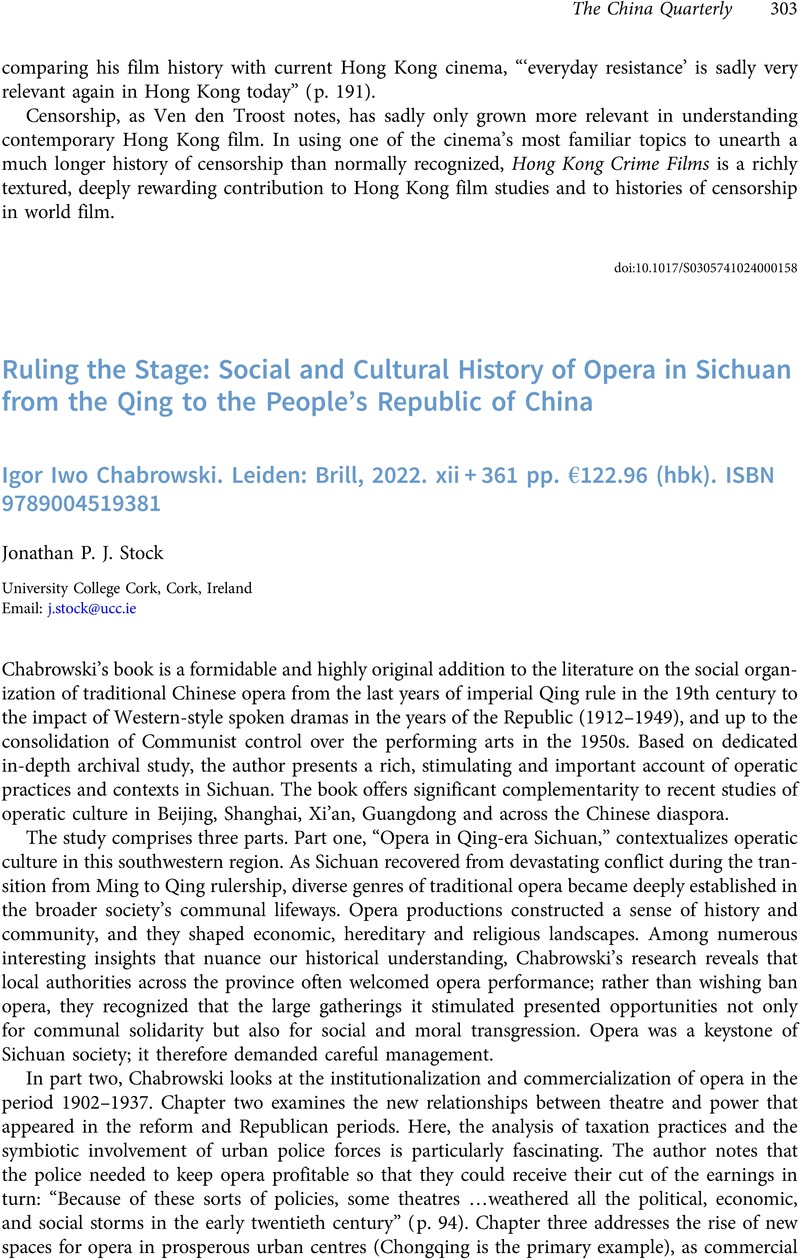No CrossRef data available.
Article contents
Ruling the Stage: Social and Cultural History of Opera in Sichuan from the Qing to the People's Republic of China Igor Iwo Chabrowski. Leiden: Brill, 2022. xii + 361 pp. €122.96 (hbk). ISBN 9789004519381
Review products
Ruling the Stage: Social and Cultural History of Opera in Sichuan from the Qing to the People's Republic of China Igor Iwo Chabrowski. Leiden: Brill, 2022. xii + 361 pp. €122.96 (hbk). ISBN 9789004519381
Published online by Cambridge University Press: 23 November 2023
Abstract
An abstract is not available for this content so a preview has been provided. Please use the Get access link above for information on how to access this content.

- Type
- Book Review
- Information
- Copyright
- Copyright © The Author(s), 2023. Published by Cambridge University Press on behalf of SOAS University of London



